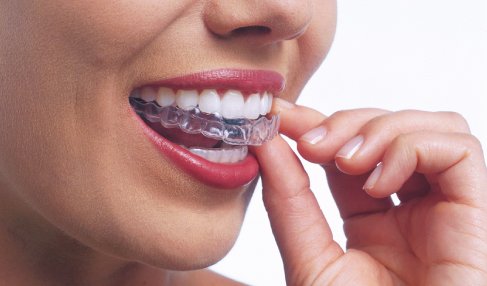
In recent years, more families in Jackson, Mississippi, are turning to Invisalign First as an early orthodontic solution for their children. Once considered a treatment mostly for teens and adults, clear aligners are now being used to correct dental issues in younger patients. This shift isn’t just about aesthetics—it reflects a broader change in how parents and orthodontists approach early intervention.
Parents Want Early Solutions That Fit Busy Lives
Many parents today are looking for options that don’t interrupt their child’s life. Between school, sports, and social events, there’s little room for frequent dental visits or emergency repairs. Invisalign First was designed with these needs in mind. The removable aligners are easy to wear, require fewer office appointments, and don’t involve wires or brackets that might break during recess or soccer practice.
For Jackson families managing packed schedules, this convenience is hard to ignore. A treatment option that works quietly in the background—and doesn’t draw attention—gives parents peace of mind while helping kids maintain their normal routines.
Better Oral Hygiene During Treatment
Cleaning around traditional braces can be challenging, especially for younger children who may already struggle with brushing thoroughly. Food can get trapped in brackets, increasing the risk of cavities and gum issues. With Invisalign First, kids simply remove their aligners before brushing and flossing. This allows them to keep up with daily hygiene more effectively, without the extra tools or effort that braces demand.
Orthodontists in Jackson often highlight this benefit when talking to parents about early treatment. They’ve seen firsthand how aligners can help reduce oral health issues during the correction process, particularly when young patients are still learning proper brushing habits.
Customized for Growing Smiles
One major reason Invisalign First is gaining traction is its design. It’s made specifically for children who still have a mix of baby and adult teeth. The aligners gently guide developing mouths into better alignment and help address crowding, spacing, and narrow dental arches.
This stage—known as Phase 1 treatment—aims to prevent more severe problems from developing later. By intervening early, orthodontists can often reduce or even eliminate the need for future extractions or more complex procedures.
In a city like Jackson, where many families prioritize long-term planning and health, the proactive nature of Invisalign First appeals to parents who don’t want to wait until problems become harder to fix.
Kids Feel More Comfortable and Confident
Confidence matters, even for young children. Some kids feel self-conscious about metal braces, especially if their friends aren’t wearing them. Others may have sensory issues or anxiety that makes traditional orthodontics harder to tolerate.
Invisalign First offers a more comfortable and discreet option. The aligners are smooth, with no poking wires or rough brackets. Kids are less likely to complain about mouth irritation or speech changes. Because the trays are nearly invisible, they often feel more at ease in school or social settings.
For many families in Jackson, the emotional side of treatment is just as important as the physical one. When children feel confident and relaxed about their care, they’re more likely to follow instructions and stick with the treatment plan.
Fewer Emergencies and Office Visits
Metal braces can lead to unexpected visits to the orthodontist when brackets break or wires shift. These issues might seem minor, but for busy parents juggling work and childcare, every extra appointment adds up.
With Invisalign First, these kinds of emergencies are rare. There are no metal parts to come loose, and aligners are changed at home every week or two. Most orthodontists in Jackson schedule checkups every six to eight weeks—sometimes even less often—depending on the child’s progress.
This flexibility makes Invisalign First an appealing choice for families who want effective results without the disruptions that often come with traditional treatment.
Improved Technology and Local Access
Not long ago, clear aligners weren’t even considered a valid option for children. But technology has changed that. The Invisalign system now uses advanced digital scans and treatment planning software to map out each step in the process. Orthodontists can predict how teeth will shift and adjust plans along the way, giving parents a clear picture of what to expect.
In Jackson, more local orthodontists are investing in this technology and gaining certification to offer Invisalign First. As it becomes more available, awareness among parents is growing. Once they see how the treatment works—and compare it to the braces they may have had themselves—they’re often surprised by the difference.
Cost and Insurance Are Catching Up
Cost used to be a big reason families skipped Invisalign. But that’s changing too. Many insurance plans that cover braces now also offer benefits for Invisalign First. In some cases, the out-of-pocket cost is nearly the same. Payment plans and flexible financing have also made the treatment more accessible to a wider range of families.
As more Jackson orthodontic offices work to keep pricing competitive, cost becomes less of a barrier. Parents who once dismissed aligners as too expensive are now taking a second look—and often deciding it’s worth the investment.
Conclusion
Invisalign First isn’t right for every child. Some cases still require braces or other types of early intervention. But for many families in Jackson, the aligners offer a solution that balances effectiveness with comfort, appearance, and practicality.
More parents are asking about Invisalign First during routine dental visits or consultations, and more orthodontists are recommending it when appropriate. As awareness continues to grow, it’s likely that clear aligners will play an even bigger role in shaping the future of early orthodontic care.
For families exploring their options, a consultation with a local orthodontist is a good place to start. With the right information, parents can make decisions that support their child’s smile—now and in the years to come.